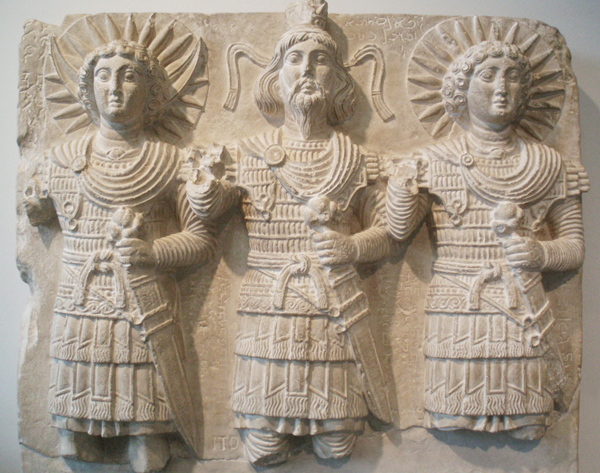Palmyrene

Semitic Gods
Near Eastern (Palmyrene)
replica: from the Louvre, Paris
date of the original: 1st or 2nd century AD
provenance of the original: Court of the Temple of Bel, Palmyra, Syria; now in the Louvre, Paris
description: Relief of three standing gods, facing front, all in military garb. Plaster replica; limestone original. Height 61 cm, width 73 cm, depth 16 cm.
This triad of Baalshamin (center) and Malakbel and Aglibol (gods of the sun and moon) comes from the temple of Bel in Palmyra in the Syrian desert on an important caravan route to Babylonia. It is probably the work of a Greek artist, on the outskirts of the Roman Empire in the first or second century AD. The view that it is of an even later date could find its defenders.
The frontality and resulting hieratic attitude reinforced by the identical posture of all three is perhaps an eastern artistic habit in representing figures, but a western approach is evident in details. The spread of western influence to Palmyra is evident from the Hellenistic lamellar armor worn by the gods and the Roman gladius (sword) carried by all three. Underneath are worn traditional eastern tunics and trousers.
(See also: Relief of Aththaia; Relief of Maliku.)